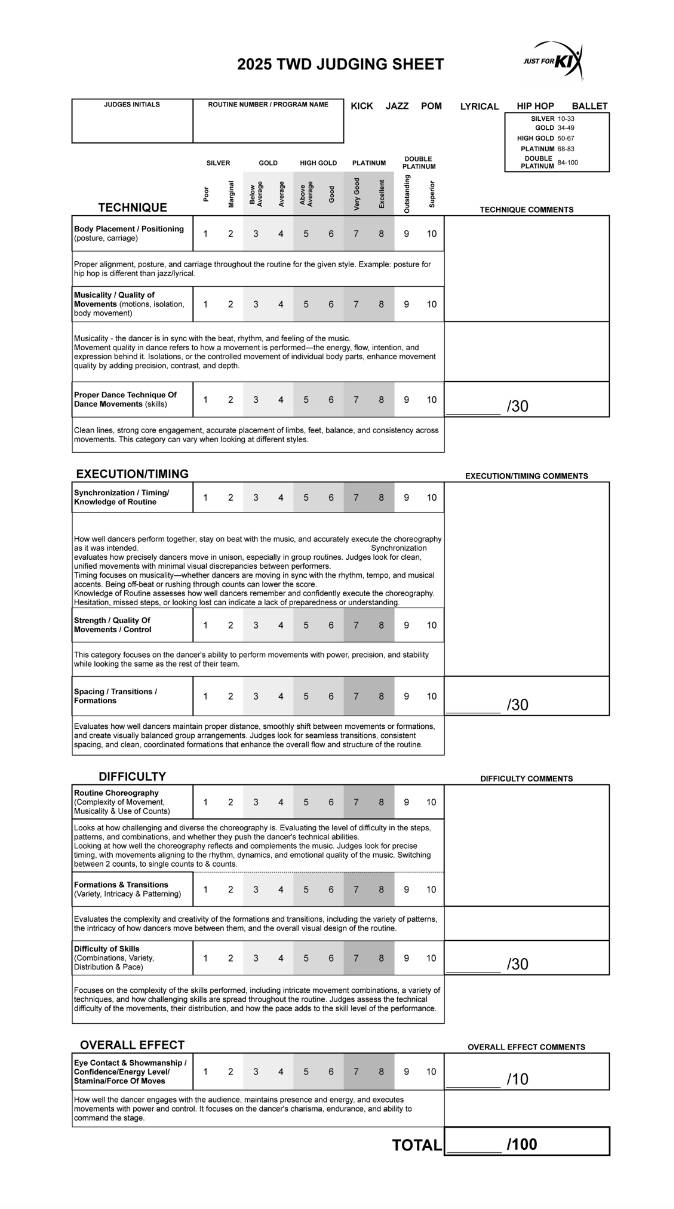Together We Dance Judging
We are thrilled to provide insight into our judging processes!
Jenny Raiche, Director of Miss Dance Team MN & Former Eastview Lightning Dance Team Head Coach
Kick
is a precision-based style that focuses on high-energy choreography centered around synchronized, high kicks performed by a team.
Annie Pierce, Former of the University of St. Thomas Dance Team Member & Current Assistant Coach
Hip Hop
is a fun, high-energy style of dance that started in New York in the 1970s. It's all about moving to the beat of the music with attitude and style.
Madison Hebrink, MN State-Mankato Former Dancer & 4x UDA College National Champion Head Coach
Pom
combines strong jazz and cheer technique with the use of poms to create visual impact and emphasize clean, powerful movements.
Adina Belanger, St. Cloud Just For Kix Director &
20 Year Camp Staff Instructor
Lyrical
is a style that blends ballet technique with the expressiveness of contemporary dance, all set to music with emotional lyrics.
Alli Mackner, University of Minnesota-Duluth 1x UDA College National Champion Coach
Jazz
is a high-energy, performance-driven style that combines strong technique with expressive flair. It features sharp, precise movements.
Katie Harmeyer, Woodbury High School Dance Team Head Coach & 10 Year TWD
Competition Judge
Judging Overview
Katie provides a brief synopsis on how judges are chosen, what expectations are, and what a competition day looks like as an adjudicator.
TWD and SDS Judging Sheets
Style Descriptions

Kick
Kick is a precision-based style that focuses on high-energy choreography centered around synchronized, high kicks performed by a team. It emphasizes uniformity, flexibility,
strength, and endurance.
Key Elements Judges Look For:
Kick Technique: This is the core of the routine. Judges look for height, control, and consistency in kicks. Legs should be straight, toes pointed, and kicks should be done from the hip with minimal body movement. Just For Kix does not have a kick minimum per routine, but there should be some kicks within this style of dance.
Synchronization: Uniformity is everything in kick routines. Every dancer should kick at the same height, time, and angle. Judges look for clean lines and perfect timing across the entire team.
Flexibility and Strength: High, controlled kicks require both. Dancers must show strong core and leg strength to maintain their posture and control, as well as flexibility
o kick high without sacrificing form.
Posture and Alignment: Dancers must maintain an upright posture, an engaged core, and proper arm placement throughout the routine. Leaning back, slouching, or breaking form can affect scores.
Stamina and Endurance: Kick routines are physically demanding and often fast-paced. Judges expect consistent energy, clean kicks, and strong technique from beginning to end—no drop
in quality or timing.
Performance Quality: Even though it's focused on precision, dancers still need to perform! Judges look for faces, confidence, and energy throughout the routine.
Hip Hop
A fun, high-energy style of dance that started on the streets of New York in the 1970s. It’s all about moving to the beat of hip hop music with attitude, rhythm, and style. In team hip hop competitions, being grounded and having strong posture are key elements that judges pay close attention to, even though hip hop has a more relaxed, street-style feel.
Grounded Movement
Being grounded means dancers keep a low center of gravity, often with bent knees, relaxed hips, and a solid connection to the floor. It gives movements power, control, and stability, especially during hard-hitting sections or footwork. In team settings, grounded movement also helps create uniformity and sharpness, making group hits and formations cleaner and more impactful.
Dancers who aren’t grounded may appear light, floaty, or off-balance, which weakens the power of the routine and reduces precision.
Posture in Hip Hop
While hip hop isn’t about standing tall like ballet, posture is still critical. It’s about holding the body with intention—whether it’s leaning back in a groove or bracing strong for a hit. Judges look for confidence in the body: shoulders down and strong, chest lifted or contracted with purpose, and a clear sense of control.
Good posture helps with execution, clarity of movement, and visual unity across the team.
In short, staying grounded and maintaining intentional posture gives hip hop routines that signature "hit hard, move smart" quality. It separates a clean, powerful team from one that feels loose or unsure on stage. You will not see many typical dance skills in a hip hop routine, such as toe touches, pirouettes, etc.

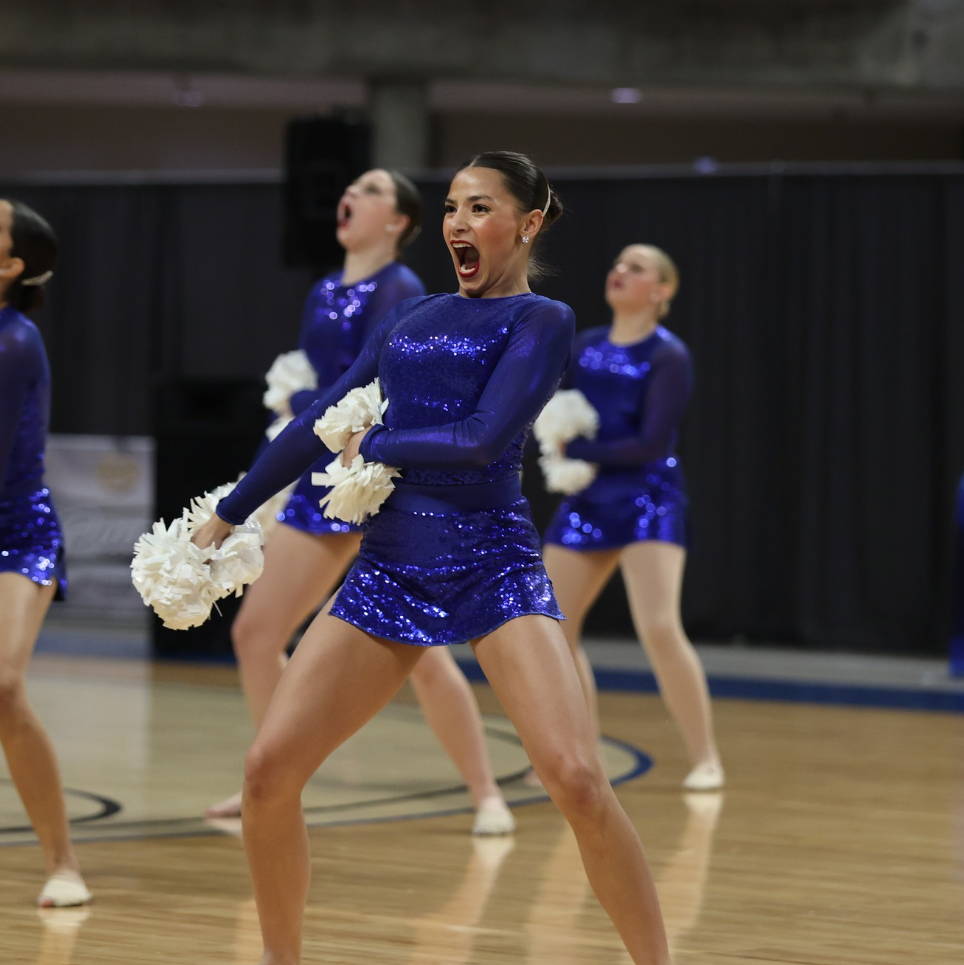
Pom
Pom combines strong jazz and cheer technique with the use of poms to create visual impact and emphasize clean, powerful movements.
Key Elements Judges Look For:
Sharp Motions: Movements in pom are crisp, tight, and exact—no soft or sloppy lines. Every motion should hit clean and strong, especially with the added visual of the poms. There can be pops of more jazz type movement but the base of pom always goes back to sharp motions.
Synchronization: Dancers must be perfectly in sync, especially in groups. Judges look for precise timing across the team, as even small differences are easy to spot.
Pom Technique: Proper arm placement, strong hits, and controlled pom use are essential. Dancers should handle the poms with purpose, not as a prop but as an extension of their movements.
Skills and Execution: Judges look for clean kicks, turns, jumps, and leaps—all done with solid technique and control. While tricks are part of pom routines, they must be performed precisely.
Facials and Energy: High energy, big faces, and consistent performance quality are a must. Judges expect a powerful presence and strong projection throughout.
Stamina and Endurance: Pom routines are fast-paced and physically demanding, so dancers must keep up the intensity from start to finish without showing fatigue.
Lyrical
Lyrical is a style that blends ballet technique with the expressiveness of contemporary dance, all set to music with emotional lyrics. It’s about telling a story or expressing a feeling through movement, connecting deeply with the music and the audience.
Key Elements Judges Look For:
Emotion and Storytelling: Lyrical is all about expressing emotion. Judges want to see dancers connect to the music and tell a story through their movement and facial expressions.
Technique: Strong ballet-based technique is essential. This includes pointed feet, clean lines, turns, leaps, and extensions. Movements should be controlled, fluid, and graceful.
Movement Quality: Judges look for smooth transitions, sustained motion, and dynamic range—mixing soft, flowing movement with moments of strength and control.
Musicality: Dancers must move with the music—not just on the beat, but with the emotion and phrasing of the song. Judges look for choreography that reflects the highs, lows,
and nuances in the music.
Transitions and Flow: Movements should blend seamlessly with each other. Choppy or awkward transitions can break the emotional impact.
Performance and Presence: Judges want dancers to be fully present and emotionally invested. Eye focus, expression, and intent are just as important as the steps.
Flexibility and Control: Many lyrical routines include big leaps, high extensions, and floor work, so strength and flexibility are key—but always executed with grace and purpose.

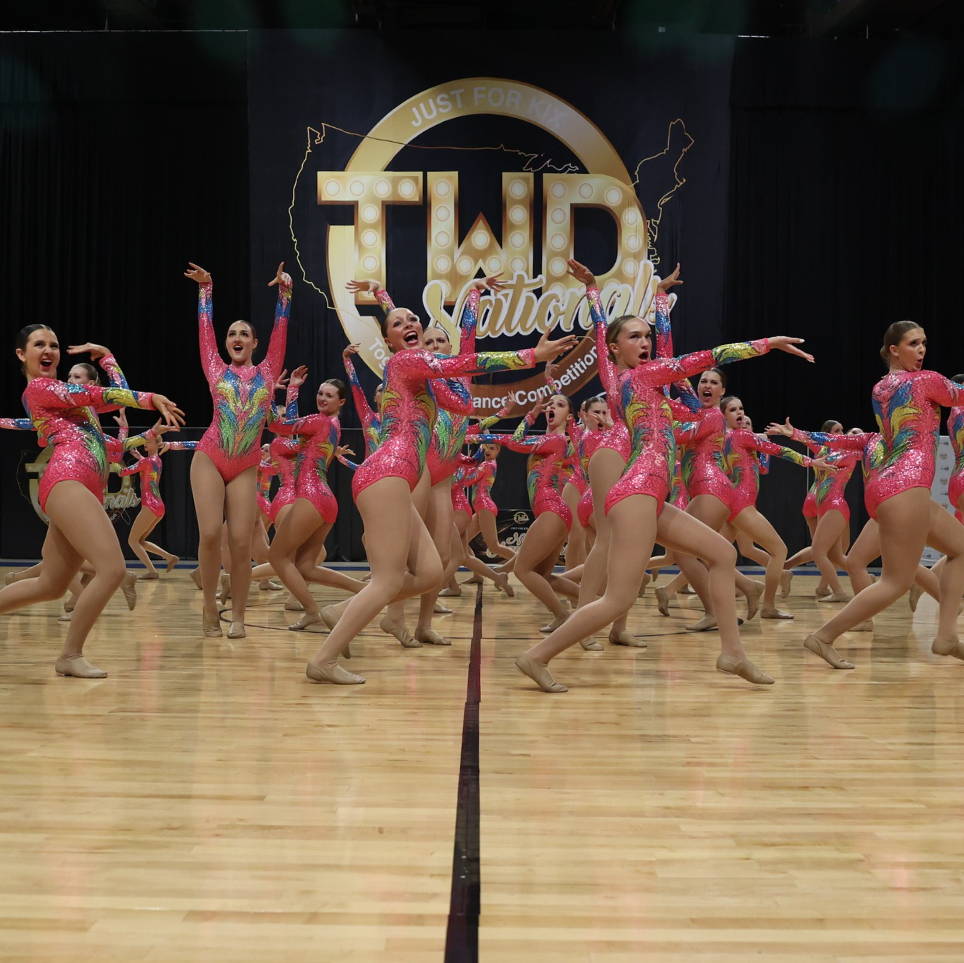
Jazz
Jazz dance is a high-energy, performance-driven style that combines strong technique with expressive flair. It features sharp, precise movements like kicks, turns, leaps, and clean lines, all performed with control and confidence.
Key Elements Judges Look For:
Technique: Clean execution of skills like pirouettes, battements, and jetés,
with strong alignment and body control.
Synchronization: In group routines, dancers must move in perfect unison for a
polished, professional look.
Performance Quality: Jazz demands bold stage presence, expressive faces, and a strong emotional connection to the music.
Musicality: Dancers should hit accents, rhythms, and nuances in the music with clear intention.
Formations & Transitions: Creative patterns and smooth shifts between formations add visual interest and show spatial awareness.
Style: Jazz can range from fierce and sassy to theatrical or dramatic,
depending on the choreography.
Movement Quality: Judges look for clarity, texture, and control in how movements are performed—whether sharp, smooth, sustained, or explosive. Quality adds depth, intention,
and polish to every step.
In short, competition jazz dance is all about combining technical skill, team precision, and expressive movement quality to create a powerful and entertaining performance.
Solo, Duet & Small Group (SDS)
In Solo, Duet, or Small Group Dance Competitions, dancers will be seen doing many different styles of dance such as Jazz, Lyrical, etc. Performances are judged on technical skills, artistic expression, and overall impact. Solos give dancers the chance to showcase their individual strengths, personality, and emotional depth. Judges look for a strong connection to the music, expressive movements, confident showmanship, and technique/skills. Since solos are even more subjective than a group dance, personal interpretation and the dancer’s ability to bring the choreography to life can greatly influence the score.
In duets, and small groups, teamwork and synchronization are key, along with individual skill. Dancers must work together to create a unified performance, using energy and eye contact with each other and the audience to enhance the collective performance. They also bring in the group aspect of having to stay timed together and work on their movements looking the same. Having choreography that compliments each other and the ability to highlight individuals within a duet and small group.
Choreography is assessed based on both difficulty and musical interpretation. Solos allow dancers to fully express their connection to the music, while group routines require choreography that highlights individual strengths while maintaining unity. High scores are awarded for both technical execution and how well dancers bring the choreography to life, whether solo or in a group.
Ultimately, solo competitions can be particularly subjective, as emotional connection and personal interpretation influence the scores. In group performances, success often depends on how well dancers blend their energy, skills, and emotion creating a cohesive and impactful performance. Each type of performance offers dancers a chance to showcase their growth, artistry, and stage presence in unique ways. Even if individual dancers perform well in their solos, they might face challenges in a group setting. Sometimes, a dancer who excels in a solo might struggle to maintain that same level of presence or precision when working within a group.
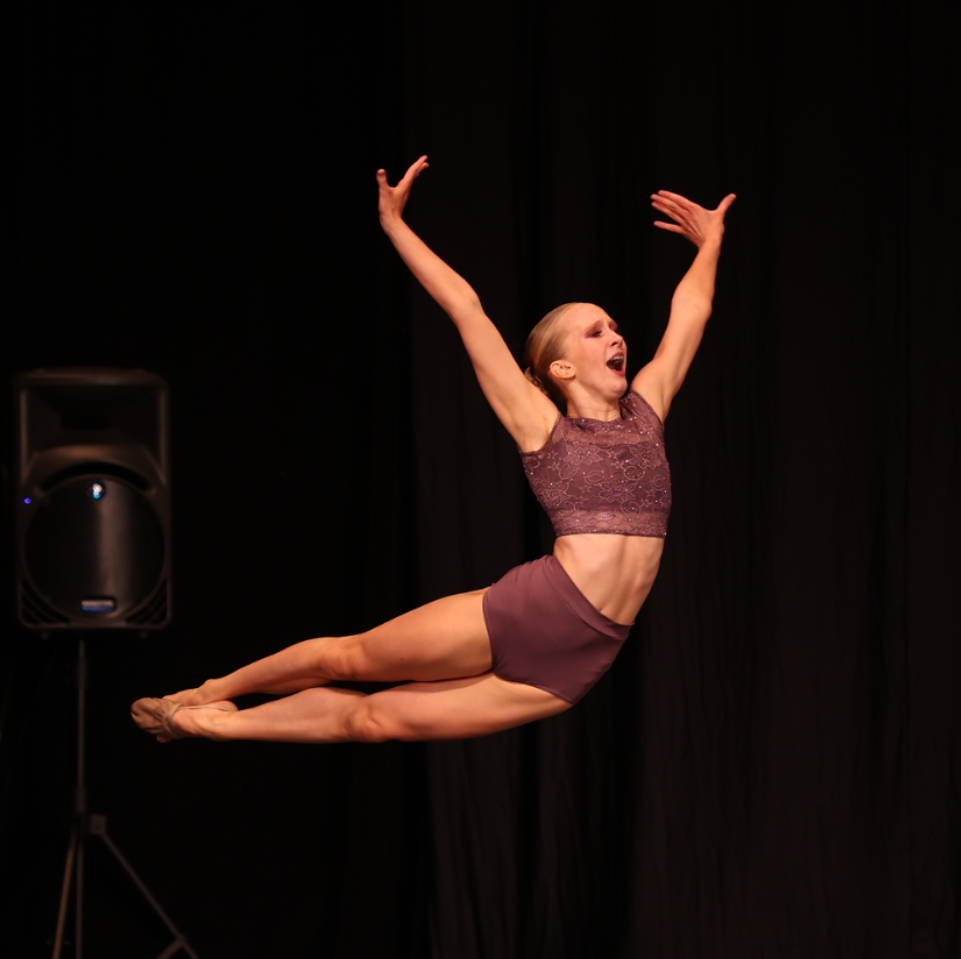
Rank System/Tiebreakers
Regional TWD Tiebreaker
Just For Kix brings in groups of judges who will follow a set score sheet and basic criteria. Teams are not judged on costuming. Judging is based on Technique (30 pts), Execution/Timing (30 pts), Difficulty (30 pts), Overall Effect (10 pts) for a total of 100 points per judge. There are 3 judges for each competition at our regional competitions. In the event of a tie the team with the highest Technique points will determine the tie breaker. From there, if a tie remains, we look at the team with the highest points in Execution, then move to Difficulty, then Overall Effect. If the teams are still tied after looking at all of these categories, the tie will stand.
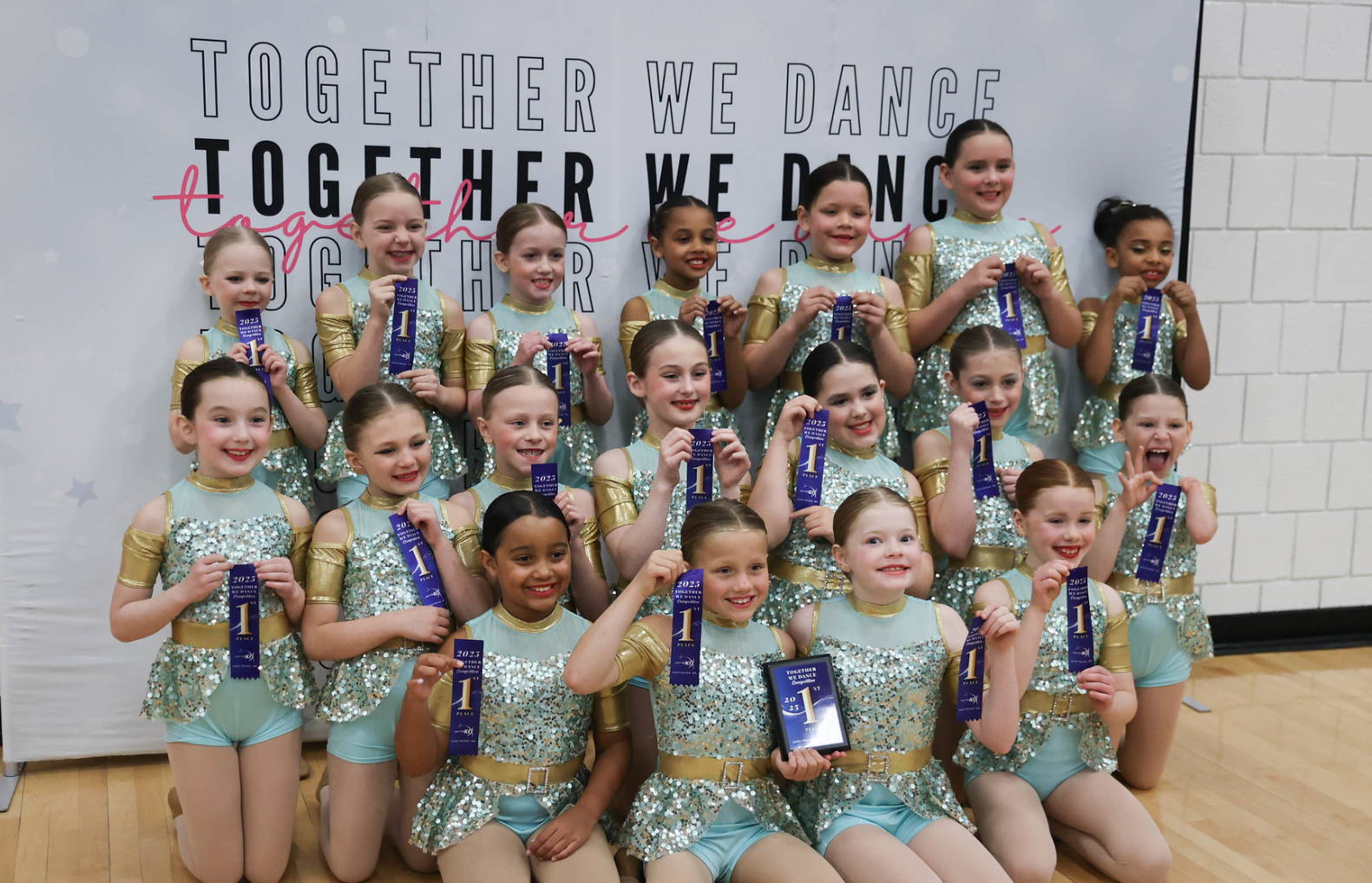
Nationals TWD & SDS Rank System and Tiebreakers
At Nationals, there will be 5 judges per division. When using 5 judges, we will sometimes use a ranking system. We work very hard to bring in more judges for Nationals since it is the biggest competition of the year and it adds more eyes on the routines. When we have 5 judges we like to use a rank system as there are
more points on the table.
Below, you can see how the rank system works. Each judge gives a point total to each team, and based on their point total, a rank is given.
For Example:
Judge A Scores these teams as follows:
Team 1 - 82
Team 2 - 75
Team 3 - 89
Judge A's Ranks would be:
Team 1 - 82 - RANK 2
Team 2 - 75 - RANK 3
Team 3 - 89 - RANK 1
The team with the lowest rank wins. When using the rank system, the highest rank and lowest rank for a team is thrown out. This is highlighted in red
on the table below.
In some cases, a team may earn higher total points but place lower due to how rank points are calculated. This can be confusing as it feels like the rank points should directly reflect the final total points, while this is usually the case, it doesn't always come out this way.
The example below shows a situation where the total points for the 2nd-place team were higher than the total points for the 1st-place team. This is because one judge had the 1st-place team so much lower, it dropped their total points below the 2nd-place team. This is the beauty of a rank system. All but one judge wanted the 1st-place team in first. So in this case, if we went with total points, they would have been 2nd. Both ways can work, it's just a little different depending on the system that is being used.
In the event of a tie:
1. The highest and lowest ranks will be added back in for each team. The team with the lower overall rank total will win.
2. If a tie still remains, we move to the total points of the middle three judges' scores (out of 300 points, with the highest and lowest scores dropped). The team with the higher total wins.
3. If the tie continues, the high and low scores are added back in to calculate a new total out of 500. Again, highest point total wins.
4. If the scores are still tied, we will compare individual category scores in the following order:
• Technique
• Execution
• Difficulty
• Overall Effect
The team with the highest score in the first differing category will win.
5. If all scores remain identical, the tie will stand.

